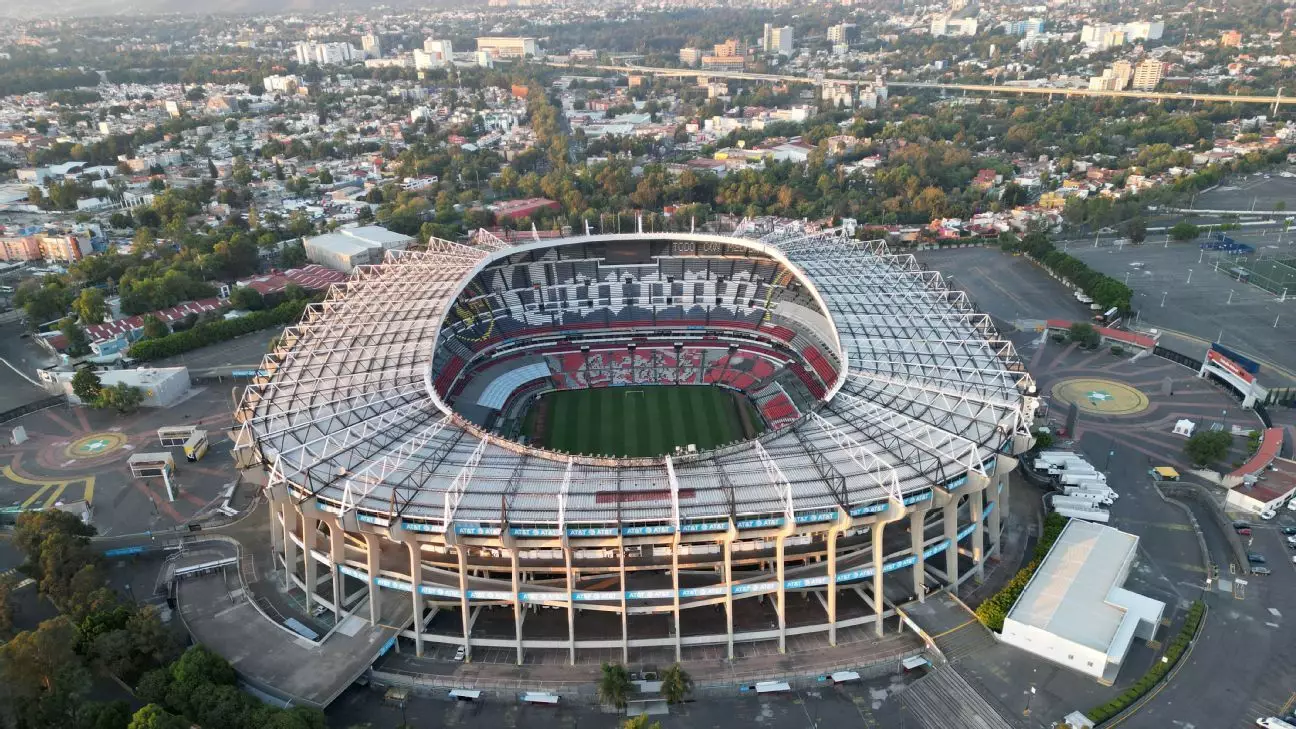The famed Estadio Azteca, a monument to football history and an emblem of Mexican pride, has officially undergone a name change to Estadio Banorte. This shift is not just a cosmetic alteration; it symbolizes a pivotal moment in the stadium’s long-held legacy as it gears up for contemporary challenges, particularly in light of the impending 2026 World Cup. As the arena prepares to become the first in history to host three World Cups, the transformation reflects a deepening commitment to modernity and sustainability.
A Strategic Partnership for Modernization
The financial backing from Banorte, which amounts to a staggering 2.1 billion pesos (approximately $105 million), aims to revitalize the stadium ahead of its grand reopening. This financial arrangement highlights the essential collaboration between private enterprises and iconic sports venues, where commercial interests align with cultural pride. Emilio Azcárraga Jean, the CEO of Ollamani, expressed enthusiasm about partnering with a leading financial institution, emphasizing that the modernization efforts won’t dilute the stadium’s essence but will instead enhance its capabilities.
Such investments are critical in a landscape where global sporting events increasingly demand state-of-the-art facilities. The earlier 1.5 billion pesos ($75 million) already poured into renovation efforts underline a robust commitment to elevating the stadium into a world-class arena capable of meeting the demands of a new generation of football fans and players alike.
Challenges Ahead: Balancing Tradition and Revenue
However, this transition is not without its hurdles. The name change from Estadio Azteca marks only the second such alteration in the stadium’s illustrious 58-year history. Such history carries weight; transforming a name that resonates with fans globally poses an inherent risk of alienation. While one can argue that the financial backing is indispensable, it begs a critical inquiry: how far should commercial interests dictate the cultural identity of sporting venues?
Moreover, the insistence of FIFA on reverting to traditional naming conventions during the 2026 World Cup raises questions about the authority of sports federations in commercial agreements. Will fans see Estadio Banorte or be reminded of the power FIFA holds over branding in these mega-events? The restrictions on sponsor names during the tournament point to a growing tension between corporate sponsorships and the preservation of heritage.
Anticipating the Future: A New Era Begins
As the new construction timelines roll out, expectations for the Estadio Banorte build upon a rich tradition while looking confidently toward the future. Expected to close renovations in early 2026, the stadium aims to not only be the backdrop for historic sporting events but also a communal space that reflects the dynamic culture of Mexico. Sustaining this should not merely rest on financial enhancements; it must be coupled with thoughtful engagement with fans and stakeholders alike to ensure that the spirit of Azteca lives on.
In today’s world, where sports serve as a unifying force, the developments at the Estadio Banorte represent a microcosm of the broader shifts in how legacy institutions navigate financial constraints while still honoring their past. The upcoming years will undoubtedly be pivotal, not only for the stadium but also for Mexican football as it prepares to showcase itself on the global stage.

